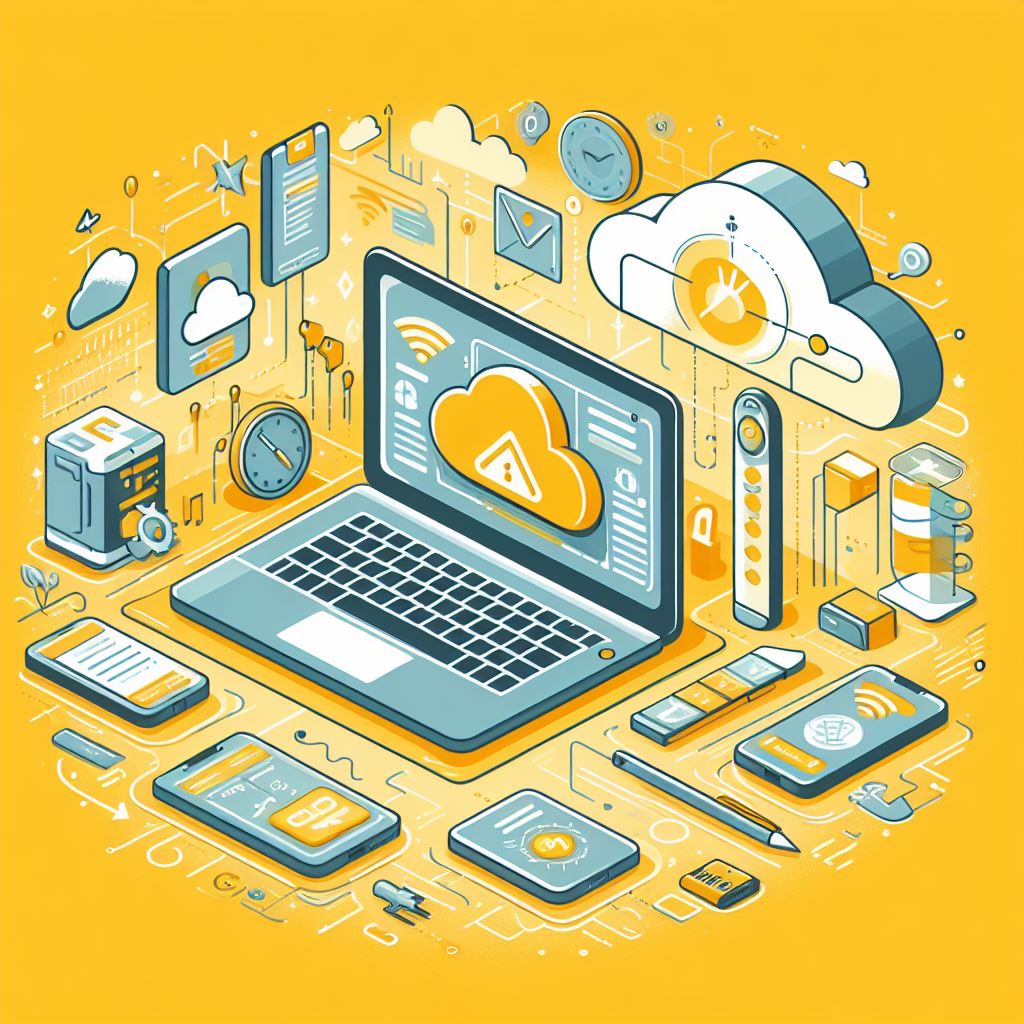Introduction:
The Internet of Things (IoT) revolution is transforming how we interact with the world. But managing and accessing these distributed devices can be a challenge, especially when they’re remote. AWS offers a robust solution: accessing IoT devices remotely via AWS.
This guide provides a roadmap for establishing secure remote access to your IoT devices using AWS. We’ll delve into the key steps involved:
Connecting Your Devices: The first step is to connect your IoT devices to AWS IoT Core. This involves setting up your AWS account and configuring your devices to communicate with AWS using protocols like MQTT. AWS offers resources and tutorials to simplify this process.
Secure Communication: Security is paramount when accessing devices remotely. AWS utilizes X.509 client certificates to authenticate devices and ensure encrypted communication. You can create and manage these certificates within the AWS IoT console.
Remote Access Methods: AWS offers multiple options for remotely accessing your devices:
Secure Tunneling: This method establishes a secure tunnel between your device and a source device (like your computer). You can then access the device through the tunnel using SSH or a web browser.
AWS IoT Greengrass: For more advanced scenarios, consider AWS IoT Greengrass. This service allows you to run local compute resources on your devices, enabling them to process data locally and communicate securely with the cloud.
Data Management and Visualization: Once connected, you can leverage AWS services to manage the data flowing from your devices. Services like Amazon S3 can store device data, while Amazon CloudWatch provides tools for data visualization and analysis.
By following these steps, you can establish secure and reliable remote access to your IoT devices using AWS. This empowers you to monitor device health, gather data, and control your devices remotely, unlocking the full potential of your IoT deployments.
Benefits of Using AWS IoT for Remote Access
The Internet of Things (IoT) landscape thrives on connectivity. But managing a network of remote devices can be daunting. AWS IoT comes to the rescue, offering a secure and feature-rich solution for remote IoT device access. Let’s explore the compelling benefits of leveraging AWS IoT for this purpose:
Enhanced Security: Security is a top priority when it comes to remote access. AWS IoT enforces robust security measures. Device authentication with X.509 certificates and encrypted communication channels ensure only authorized devices can connect and data remains confidential.
Simplified Management: Managing a multitude of devices can be overwhelming. AWS IoT’s Device Management service streamlines this process. You can remotely monitor device health, track performance metrics, and identify potential issues – all from a centralized console.
Scalable Operations: As your IoT network expands, managing remote access shouldn’t become a bottleneck. AWS IoT’s scalability ensures it can seamlessly adapt to your growing fleet of devices. Remote operations like firmware updates and configuration changes can be deployed to a large number of devices efficiently.
Cost-Effectiveness: AWS IoT offers a pay-as-you-go pricing model, making it cost-efficient for deployments of any size. You only pay for the resources you use, eliminating the need for upfront investments in complex infrastructure.
Streamlined Data Collection and Analysis: Remote access unlocks the true potential of your IoT devices. Data collected from these devices becomes readily accessible for analysis. AWS integrates seamlessly with services like Amazon S3 for data storage and Amazon CloudWatch for visualization, empowering you to gain valuable insights from your IoT data.
By incorporating AWS IoT for remote access, you gain a powerful tool to manage your IoT devices effectively. Enhanced security, simplified management, scalability, cost-efficiency, and streamlined data collection – these are just some of the many benefits that make AWS IoT a compelling choice for unlocking the full potential of your remote IoT deployments.
Step-by-Step Guide to Accessing IoT Devices Remotely via AWS:
The Internet of Things (IoT) revolution is transforming industries, with devices collecting and transmitting data to provide real-time insights. But managing these geographically dispersed devices can be a challenge. AWS offers a robust solution: securely accessing your IoT devices remotely. This guide provides a detailed roadmap, walking you through the steps required to establish remote access to your devices using AWS.
1. Setting Up Your AWS Account:
Before diving in, ensure you have an AWS account. If you’re new to AWS, you can sign up for a free tier account which provides access to a limited set of resources for experimentation.
2. Connecting Your Devices to AWS IoT Core:
The heart of AWS IoT is the AWS IoT Core service. This acts as a central hub for communication between your devices and the AWS cloud. Here’s how to connect your devices:
Provisioning: You’ll need to create a “thing” in the AWS IoT Core console for each device you want to connect. This “thing” represents your physical device in the cloud and stores information like device ID and security credentials.
Device SDK Integration: Integrate the AWS IoT Device SDK into your device firmware. The SDK enables secure communication between your device and AWS IoT Core using protocols like MQTT (Message Queuing Telemetry Transport).
3. Securing Communication:
Security is paramount when remotely accessing devices. AWS utilizes X.509 client certificates for a two-way authentication process:
Creating Certificates: Use the AWS IoT console to generate a pair of X.509 certificates – one for your device and another for the AWS IoT Core service. These certificates act as digital identities, ensuring only authorized devices can connect.
Attaching Certificates: During device provisioning, attach the device certificate to the corresponding “thing” in the AWS IoT Core console. This establishes trust between your device and the cloud service.
4. Choosing Your Remote Access Method:
AWS offers two primary methods for remotely accessing your devices:
Secure Tunneling: This method creates a secure encrypted tunnel between your device and a “source” device (like your laptop). Once the tunnel is established, you can access your device through the tunnel using tools like SSH (Secure Shell) for command-line access or a web browser for a more user-friendly experience.
AWS IoT Greengrass: For more advanced scenarios with local processing capabilities, consider AWS IoT Greengrass. This service allows you to run local computing resources on your devices. Devices can then process data locally, filter and send relevant data to the cloud, and even execute tasks (like firmware updates) based on pre-defined rules. Greengrass facilitates secure communication with the cloud using the same X.509 certificate mechanism.
5. Data Management and Visualization:
Once you have remote access established, you can leverage AWS services to manage the data flowing from your devices. Services like:
Amazon S3: Provides secure and scalable storage for your device data.
Amazon Kinesis: Enables real-time data streaming for applications that require immediate processing.
Amazon CloudWatch: Offers tools for data visualization and analysis, allowing you to gain insights from your IoT data.
Security Considerations:
The convenience of remote access to your Internet of Things (IoT) devices via AWS comes hand-in-hand with the responsibility of robust security. Here are some key considerations to fortify your defenses:
Certificate Management: X.509 certificates are the backbone of AWS IoT’s authentication system. Enforce strong password policies and rotate certificates regularly to minimize the risk of compromise. Consider using a dedicated Certificate Authority (CA) for managing and issuing certificates.
Least Privilege Access: Implement the principle of least privilege. Grant users only the minimum permissions required to perform their specific tasks on devices. This minimizes the potential damage if a user’s credentials are compromised.
Network Segmentation: Segregate your IoT network from your critical business systems. This creates an additional layer of security by limiting the potential impact of a breach on your core infrastructure.
Monitoring and Logging: Enable continuous monitoring of your AWS IoT environment. Pay close attention to device activity logs and identify any anomalies that might indicate unauthorized access attempts.
Software Updates: Stay vigilant about keeping your AWS IoT Core service and device firmware up-to-date. These updates often include security patches that address vulnerabilities and mitigate potential risks.
By following these security best practices, you can create a robust defense system for your remotely accessed IoT devices on AWS. Remember, security is an ongoing process, so regularly review and refine your security posture to stay ahead of evolving threats.
Conclusion
This comprehensive guide has equipped you with the knowledge to securely access and manage your remote connect iot device over internet aws remotely via AWS. By leveraging AWS IoT Core, secure communication protocols, and robust security practices, you can unlock the full potential of your IoT deployments. Gain valuable insights from device data, ensure device health, and implement remote control capabilities – all while maintaining the highest security standards. Embrace the power of the IoT revolution with the confidence of secure and reliable remote access through AWS.
FAQ:
1. What is the process for connecting an IoT device to AWS for remote access?
There are two main approaches:
- Direct connection: Configure your device to connect to AWS IoT Core using a secure communication protocol like MQTT. This involves creating a thing (representation of your device in AWS) and setting up credentials.
- AWS IoT Greengrass: Deploy a local software agent (Greengrass) on your device. This allows you to run AWS services like Lambda functions directly on the device for pre-processing data or local control, and then connect to AWS IoT Core for cloud interaction.
2. How can I securely access my device remotely?
AWS offers multiple secure options:
- X.509 client certificates: These provide strong mutual authentication between your device and AWS.
- Just-in-Time Registration (JITR): Allows dynamic provisioning of certificates on device connection, simplifying certificate management for a large number of devices.
- AWS IoT Secure Tunneling: Creates a secure tunnel between your web browser and the device for remote access via SSH.
3. Can I use a web browser to access my IoT device remotely?
Yes, with AWS IoT Secure Tunneling. This feature establishes a secure connection and provides temporary access tokens for both the source (your browser) and the destination device (your IoT device).
4. What are some benefits of using AWS for remote IoT device access?
- Scalability: AWS can handle a vast number of connected devices.
- Security: Multiple layers of security ensure safe communication between devices and the cloud.
- Management: Centralized console for managing devices, certificates, and policies.
- Services: Integration with other AWS services for data analytics, visualization, and device control.
5. Are there any costs associated with remote access via AWS?
AWS IoT Core has a free tier for basic use cases. Beyond that, pricing depends on the number of devices, messages exchanged, and resources used.


